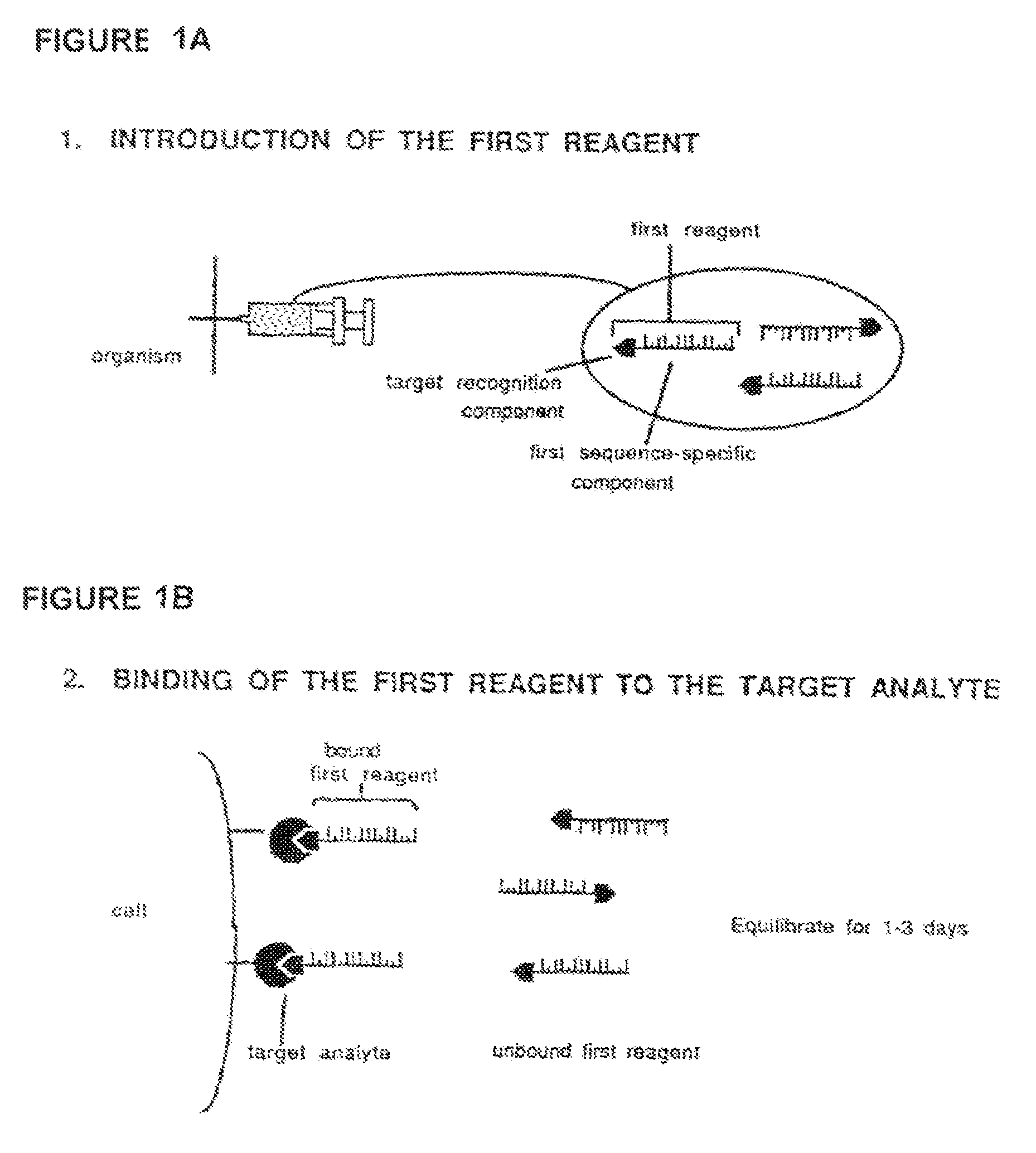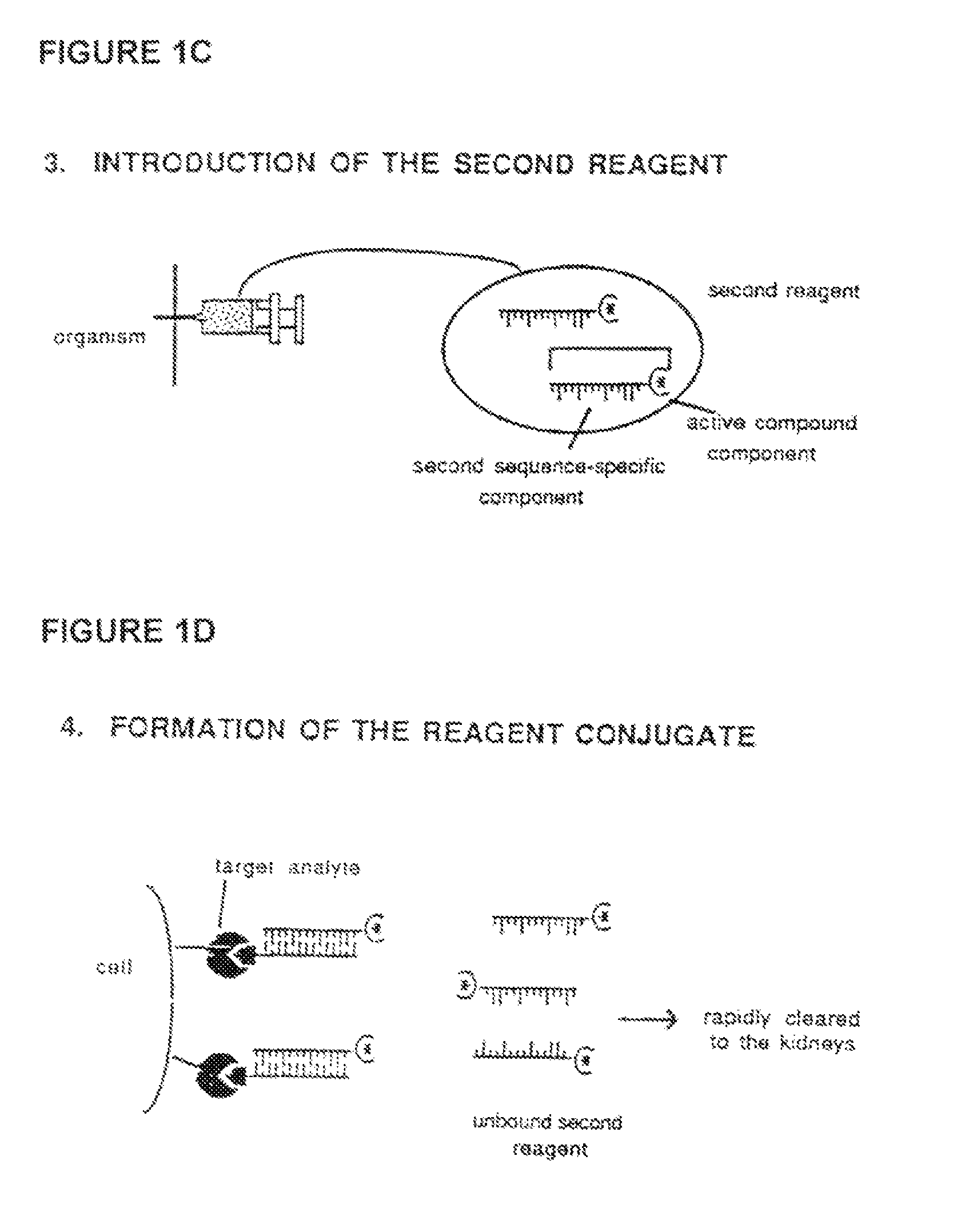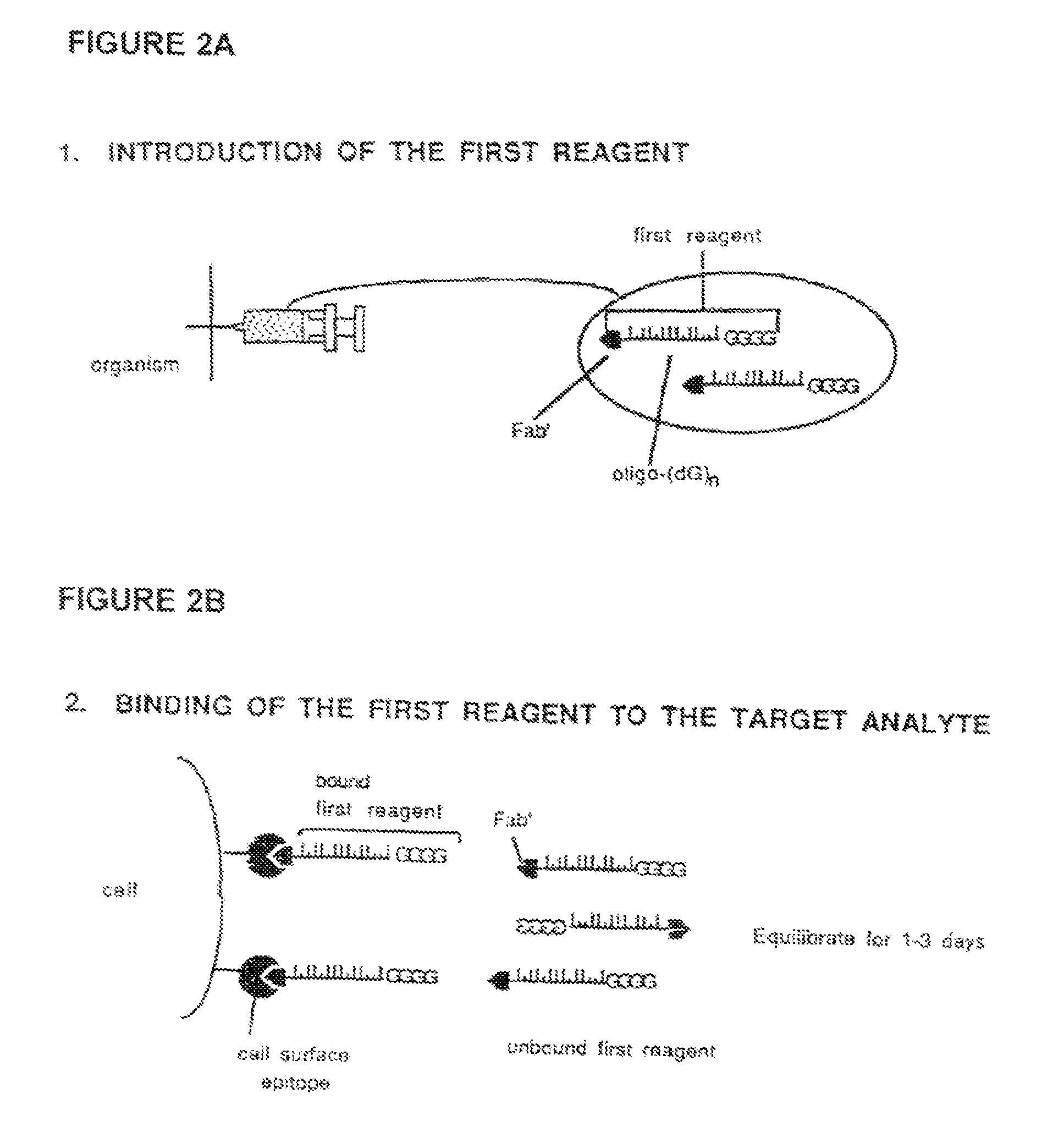Method for in vivo delivery of active compounds using reagent conjugate
a technology of active compounds and conjugates, which is applied in the field of in vivo delivery of active compounds using reagent conjugates, can solve the problems of untargeted tissue damage, unsuitable delivery system of conjugated monoclonal antibodies, and the degree of kidney damage, so as to improve efficiency or effectiveness, improve detection sensitivity, and improve the effect of image superiority
- Summary
- Abstract
- Description
- Claims
- Application Information
AI Technical Summary
Benefits of technology
Problems solved by technology
Method used
Image
Examples
examples
Preparation of Reagents
[0072]The target recognition component of the first reagent, which is comprised of an Fab′ antibody fragment, is prepared by conventional methods from mouse ascites fluid containing HMB-45 monoclonal antibody (MA-930, Enzo Diagnostics, Inc.) which is specific for a surface cytoplasmic component of melanoma cells and embryonic melanocytes (Gown et al., “Monoclonal Antibodies to a Melanoma-Specific Cytoplasmic Antigen,” United States-Canadian Division International Academy of Pathology, 74th Annual Meeting, Toronto, ONT, Mar. 11-15, 1985, Laboratory Investigations 52:25A-26A (1985).
[0073]According to their published abstract, Gown et al. developed a set of monoclonal antibodies (HMB-18, HMB-45, HMB-50) to a Triton-insoluble extract of human malignant melanoma cells. When screened on various cell lines in culture, it displays granular intracytoplasmic fluorescence only on melanoma cell lines and is nonreactive with all nonmelanoma tumor cell lines tested. Ultrast...
PUM
| Property | Measurement | Unit |
|---|---|---|
| pH | aaaaa | aaaaa |
| concentration | aaaaa | aaaaa |
| pressure | aaaaa | aaaaa |
Abstract
Description
Claims
Application Information
 Login to View More
Login to View More - R&D
- Intellectual Property
- Life Sciences
- Materials
- Tech Scout
- Unparalleled Data Quality
- Higher Quality Content
- 60% Fewer Hallucinations
Browse by: Latest US Patents, China's latest patents, Technical Efficacy Thesaurus, Application Domain, Technology Topic, Popular Technical Reports.
© 2025 PatSnap. All rights reserved.Legal|Privacy policy|Modern Slavery Act Transparency Statement|Sitemap|About US| Contact US: help@patsnap.com



